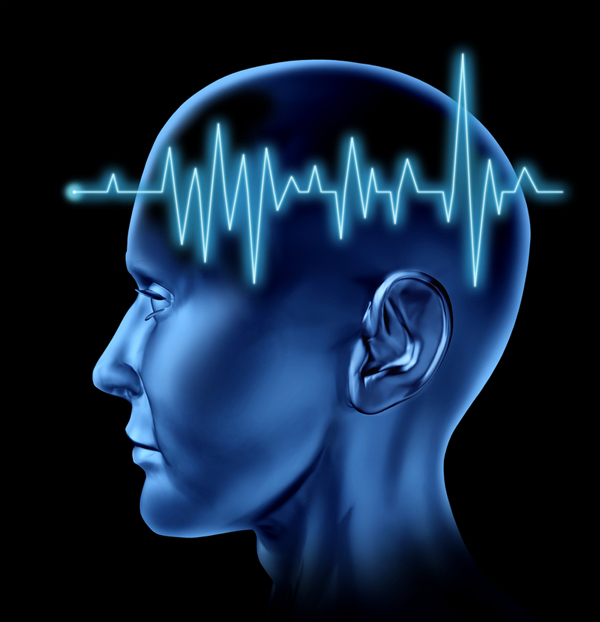Shock Therapy's Mystery Closer to Being Solved

While "shock therapy" has been used in psychiatry for more than 70 years, researchers had little idea how the controversial treatment worked to treat depression. Now, scientists say they may have solved the mystery.
The therapy, which provides electrical stimulation to the brain and is extremely effective in treating severe depression, appears to affect how brain areas communicate with each other. It relieves "over-communication" in the brain that may make it difficult for people with depression to think and concentrate, said study researcher Jennifer Perrin, a mental health researcher at the University of Aberdeen in Scotland.
"We believe we’ve solved a 70-year-old therapeutic riddle," said study researcher Ian Reid, a psychiatrist at the university.
By understanding how the treatment, properly known today as electroconvulsive therapy(ECT), works, researchers may one day be able to replace it with something that has a lower risk of side effects, but is just as effective, Perrin said. However, such a replacement treatment is a long way off, she said.
How ECT works
Electroconvulsive therapy, first used in the 1930s, involves placing electrodes on the forehead and passing electrical currents through the brain in order to induce a seizure lasting from 30 to 60 seconds. In the early years of the therapy, patients were not given anesthesia, and high levels of electricity were used.
Today, the therapy is safer because patients receive anesthesia and electricity doses are much more controlled, according to the Mayo Clinic. Still, the treatment can impair short-term memory and, in rare cases, cause heart problems.
Get the world’s most fascinating discoveries delivered straight to your inbox.
ECT is one of the most effective treatments in psychiatry — 75 to 85 percent of patients who receive it recover from their symptoms, Reid said. That compares with about 40 percent of depression patients who recover after treatment from their primary care physician, Reid said.
Currently, ECT is used only in patients who are severely depressed and at risk for suicide, or patients who have not responded to other treatments, Reid said.
In the new study, the researchers scanned the brains of nine severely depressed patients, before and after they received ECT, using functional magnetic resonance imaging (fMRI). Patients typically received eight treatments, and the final brain scan was performed about one week after the last treatment, Perrin said. All patients had previously failed to respond to antidepressants, but were successfully treated with ECT.
The researchers examined the brains so-called "functional connectivity," or internal communication pattern, Perrin said.
The treatment appeared to turn down an overactive connection between brain regions responsible for mood and emotion and those responsible for thinking and concentrating, the researchers said. Perrin likened the mechanism to dialing down a stereo that's too loud.
Testing depression treatments
Recently, researchers have proposed depression may be due to a hyper-connectivity, or over-communication between the brain regions implicated in the new study's results.
"For the first time, we can point to something that ECT does in the brain that makes sense in the context of what we think is wrong in people who are depressed," Reid said.
Researchers may be able to test the effectiveness of existing or new treatments for depression by seeing how well they relieve this hyper-connection, Perrin said.
The study brings us a step closer to understanding exactly how ECT works, said Dr. Laura Gilley-Hensley, of the University of Utah Neuropsychiatric Institute, who was not involved in the study. However, there is still the question of how an electrical stimulus would lead changes in the brain's connectivity, Gilley-Hensley said.
In addition, we don't know why ECT works so much better than antidepressants, which have also been shown to reduce brain connectivity, Gilley-Hensley said.
Future studies may lead to finding more precise doses of ECT to further reduce the risk of side effects and the time it takes for treatment to work, Gilley-Hensley said. Brain connectivity levels could be used as a way to see if patients are responding to the treatment, she said.
The findings will be published this week in the journal Proceedings of the National Academy of Sciences.
Pass it on: Scientists may have figured out how shock therapy works to treat depression.
This story was provided by MyHealthNewsDaily, a sister site to LiveScience. Follow MyHealthNewsDaily staff writer Rachael Rettner on Twitter @RachaelRettner. Find us on Facebook.

Rachael is a Live Science contributor, and was a former channel editor and senior writer for Live Science between 2010 and 2022. She has a master's degree in journalism from New York University's Science, Health and Environmental Reporting Program. She also holds a B.S. in molecular biology and an M.S. in biology from the University of California, San Diego. Her work has appeared in Scienceline, The Washington Post and Scientific American.


